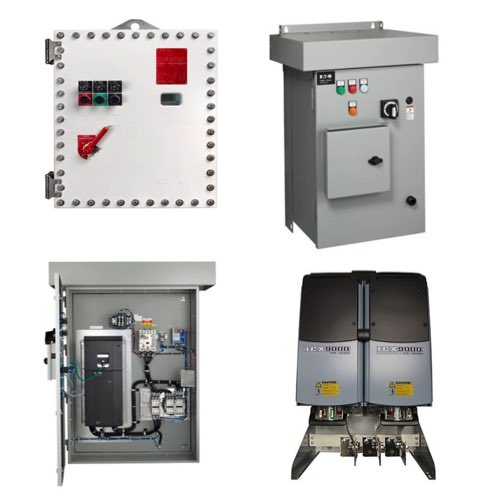Eaton VFDs

RSP Supply carries a full line of Eaton Variable Frequency Drives (VFDs), available in single-phase and three-phase configurations with power ratings from 0.5 HP to 2000 HP. Eaton VFDs, also known as Adjustable Speed Drives (ASDs), provide accurate motor speed and torque control, enhancing performance and efficiency across a wide range of industrial and commercial applications.
Eaton VFDs are designed to control the acceleration, deceleration, and speed of both induction and synchronous motors. By regulating motor output to match system demand, they improve energy efficiency, reduce mechanical stress, and extend equipment life. Ideal for use in HVAC systems, pumps, fans, and conveyor systems, Eaton drives deliver exceptional reliability and flexibility. Their advanced control technology ensures smooth operation and cost-effective performance, making them a smart choice for modern automation and power management.
FAQs
Q: What is the primary function of an Eaton VFD?
An Eaton VFD controls the speed, torque, and direction of an AC motor, improving efficiency and allowing precise control of industrial machinery and systems.
Q: What are typical applications for Eaton VFDs?
Eaton VFDs are commonly used in HVAC systems, pumps, fans, conveyors, and other industrial machinery requiring variable motor speed control.
Q: What is the speed range and output voltage of an Eaton VFD?
The speed range typically varies from 0 to 120 Hz, with output voltage adjustable from 0 to the input supply voltage depending on model and configuration.
Q: Can Eaton VFDs operate both induction and synchronous motors?
Yes. Eaton VFDs are compatible with both induction and synchronous motors, offering precise control across various motor types.
Q: Do Eaton VFDs help reduce energy consumption?
Yes. By adjusting motor speed to meet system demand, Eaton VFDs significantly reduce energy consumption and associated operating costs.
Why Buy Eaton Variable Frequency Drives (VFDs) from RSP Supply
RSP Supply offers a complete selection of Eaton Variable Frequency Drives with fast shipping, competitive pricing, and expert technical support. Our team helps you find the right drive for your specific voltage, phase, and horsepower requirements. Whether for new installations or retrofits, Eaton VFDs from RSP Supply deliver superior performance, energy savings, and long-term reliability in demanding industrial environments.

